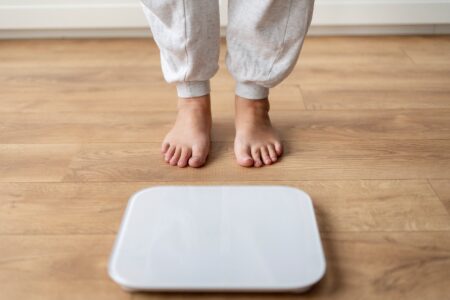The question of how many times a day you should eat is also causing heated debate this year. Is it healthy to eat handfuls of food 6–7 times a day or one large portion? In a situation where many nutritionists continue to recommend eating 6–7 meals a day, Heikki Mägi, one of the creators of fitlap.ee, dares to recommend eating 4 times a day. He claims that this does not make weight loss any harder.
Why is it recommended to eat more often?
What do reliable studies show?
What are the benefits of eating 1–2 times a day?
Freedom from food
Summary
If 4 meals a day seems radical compared to 6-7 meals, what about eating 1-2 times a day? Before we get to that question, let's take a look at why frequent eating is recommended.
Why is it recommended to eat more often?
The main arguments for eating 6–7 meals are as follows.
Argument 1: By eating frequently, you teach your body that it will be able to eat again soon, and it will not store energy in your hips. However, this is not true. By constantly eating, you keep insulin levels high, which instead promotes fat storage, prevents its burning, and creates a feeling of hunger.
Argument 2: Eating frequently speeds up your metabolism. This is simply not true. Several studies have shown that dividing your food into smaller meals does not affect the energy you get from food or your metabolic rate.
Argument 3: Eating once or twice a day will cause your blood sugar levels to spike. This is another lie. Blood sugar fluctuations don't depend on how many times a day we eat, but on what we eat.
What do reliable studies show?
The fact that a researcher claims something based on their work is not an indicator. There are many studies, and unfortunately not all of them are reliable. It could be a case of too small a sample size, a strong desire to prove their hypothesis, or a bias based on the interests of the research funder.
Adventist theology lifestyle research (AHS-2), which involved over 50,000 people and whose data have been analyzed by researchers from several universities, I dare to consider reliable. Its data shows a connection between the number of meals and body mass index. The connection is such that as the number of meals increases, so does the body mass index.
The graph shows that the average body mass index of the study participants increases linearly with the number of meals.
What are the benefits of eating 1–2 times a day?
 Eating once or twice a day gives our vital organs, digestive hormones, and metabolic function a rest and reduces oxidative stress in the body, which is closely linked to chronic inflammation. The benefits are believed to come from fasting, which improves organ tissue function, reduces inflammation, and lowers the risk of chronic disease. It is also associated with a lower risk of insulin resistance, which in turn reduces the risk of diabetes.
Eating once or twice a day gives our vital organs, digestive hormones, and metabolic function a rest and reduces oxidative stress in the body, which is closely linked to chronic inflammation. The benefits are believed to come from fasting, which improves organ tissue function, reduces inflammation, and lowers the risk of chronic disease. It is also associated with a lower risk of insulin resistance, which in turn reduces the risk of diabetes.
Eating 1-2 meals a day usually means going to bed earlier, which is an important part of any weight loss plan. Seven hours of quality sleep is associated with weight loss, a lower risk of chronic diseases, and improved metabolism.
Eating once a day increases focus and productivity. Who hasn't experienced afternoon drowsiness? Eating once a day eliminates the problem of afternoon drowsiness, because then there is no lunch.
Weight loss, especially when eating once a day. From personal experience, I can confirm that even two meals a day will make you lose weight. Even if the food is not healthy in the usual sense. You simply do not consume as many calories as if you were eating all day.
Freedom from food
Forget about constantly counting calories or eating takeout. Meals don't have to control your life. You'll free up a lot of mental energy when you don't have to constantly plan 4-6 meals a day.
1–2 meals a day and intermittent fasting
Reducing your meals to one or two meals a day means you are also fasting for 17–18 hours a day. I have written an article about this in “Lose excess pounds while you sleep – intermittent fasting". While intermittent fasting does not necessarily mean reducing meals, eating 1–2 times a day usually involves intermittent fasting and the benefits that come with it.
The most common scheme is 16:8, which means that you have 8 hours a day to eat and 16 hours to fast. How many times you eat during those 8 hours is up to you. Eating every few hours will give you 3-4 meals. One or two meals will fit in nicely. It is considered ideal to have at least 5 hours between meals. Two meals a day, 5 hours apart, gives you 18:6 intermittent fasting.
Is it difficult to eat 1-2 times a day?
 The answer to this question depends on your eating habits and the foods you eat. If you are used to snacking between meals and consuming a lot of fast carbohydrates (such as refined wheat flour or products with a lot of added sugars), then this will be difficult, but not impossible. You get used to everything, and if you think now that this is definitely not for you, after 6 weeks of practice you may be very surprised at your abilities.
The answer to this question depends on your eating habits and the foods you eat. If you are used to snacking between meals and consuming a lot of fast carbohydrates (such as refined wheat flour or products with a lot of added sugars), then this will be difficult, but not impossible. You get used to everything, and if you think now that this is definitely not for you, after 6 weeks of practice you may be very surprised at your abilities.
By eating plenty of foods that contain it every day (not once a week) water-soluble fiber (vegetables, including fruits, berries, vegetables, root vegetables, legumes), as well as grains, it is relatively easy to switch from three meals a day to two and, if desired, to continue eating only one meal after a while.
So what about those delicious foods, like meat, dairy, desserts – they can still be consumed in moderation. The problem tends to be simply in quantity. If there are as many of these delicious things as the aforementioned sources of fiber, then the taste buds don't get used to appreciating the new food and the effect of a small amount of fiber is also short-lived. It is the soluble fiber from vegetables (not the water-insoluble fiber mainly from grains) that helps to keep the feeling of fullness and blood sugar levels even.
Meals – In conclusion
Although there is much talk that skipping meals is bad and that it is better to eat between meals, the data from the second Adventist lifestyle study shows the opposite. Rather, it is beneficial to eat 1-2 times a day and reap the benefits of intermittent fasting, thus giving vital organs a rest and reducing oxidative stress, which is one of the sources of chronic inflammation. By eating an adequate amount and variety of vegetables, this is not a difficult task at all.

Allan Randlepp
NutritionistAllan is a nutritionist and trainer whose favorite topics are lifestyle and longevity, including nutrition and physical activity.
Nutritional counseling





